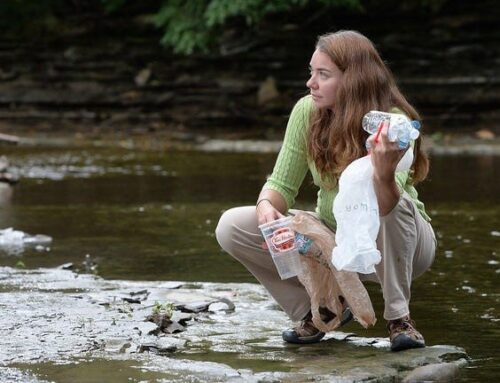[et_pb_section fb_built=”1″ admin_label=”section” _builder_version=”3.22″][et_pb_row admin_label=”row” _builder_version=”3.25″ background_size=”initial” background_position=”top_left” background_repeat=”repeat”][et_pb_column type=”4_4″ _builder_version=”3.25″ custom_padding=”|||” custom_padding__hover=”|||”][et_pb_text admin_label=”Text” _builder_version=”4.9.9″ background_size=”initial” background_position=”top_left” background_repeat=”repeat” hover_enabled=”0″ sticky_enabled=”0″]
The Doan Brook Watershed Partnership staff and Board of Trustees support the Northeast Ohio Regional Sewer District’s (NEORSD) recommendation to restore the North and Middle branches of Doan Brook, in concept. Through our work and mission, we foster public education and environmental stewardship that celebrates and restores ecology in the Doan Brook Watershed. The instream and riparian habitats of the North and Middle branches can be restored to a high degree if the Horseshoe Lake dam is removed. The Doan Brook will have the opportunity to flow as it once did for over 14,000 years in this location. The details of NEORSD’s concept are forthcoming, thus we encourage NEORSD to continue answering public and stakeholder questions, hosting public forums and sharing data and information. We encourage a vision that inspires the same level of beauty, community connection and equal public access as Horseshoe Lake has provided for many years.
Horseshoe Lake & Lower Shaker Lake Dams
Frequently Asked Questions – July 1, 2021
- Why was Horseshoe Lake drained? Why is it still empty?
In 2018, the Ohio Department of Natural Resources (ODNR) required that Horseshoe Lake be drained because of concern about the safety of the dam. The initial expectation was that some relatively minor temporary repairs could make the dam safe enough that it could be refilled. However, additional problems were found when the lake was drained. Problems with the dam structure include active seepage through the dam sufficient to cause sinkholes upstream and cracks in the concrete and stone work of the spillway structure.
Problems with the dam are severe enough that it is considered to be slowly failing. ODNR has required that the lake remain drained until major repairs can be made to the dam. Such repairs would include bringing the dam into compliance with requirements for a Class I dam (see below for the definition of a Class I dam). - Who is responsible for the Shaker Lakes?
The cities of Cleveland Heights and Shaker Heights are jointly responsible for the ODNR compliance of the Shakers Lakes dams, and the cities are responsible for funding any work on the dams. The Northeast Ohio Regional Sewer District (NEORSD) has proposed to fund the removal of Horseshoe Lake dam and necessary upgrades to Lower Lake dam as part of their Regional Stormwater Management Program (see below for more information). NEORSD will not move forward with their proposal unless the two cities invite them to do so. - Is Horseshoe Lake dam safe as long as the lake is drained?
No. The dam cannot be made adequately safe in its current configuration. Whenever there is significant rain, water backs up behind the dam, putting pressure on the structure. Though the dam is in danger of failing each time this happens, NEORSD indicates that ODNR is not ‘overly concerned’ about the risk of immediate failure at this time. For the dam be safe, it will be necessary to either remove it or substantially rebuild it. - Where does the Ohio Department of Natural Resources (ODNR) come in?
ODNR is responsible for ensuring that life, health, and property are protected from dam failures. In this role, they conduct periodic safety inspections of the Shaker Lakes dams, and they have the power to take enforcement action against responsible parties if safety orders are not addressed. - What are the ODNR requirements for the Shaker Lake dams? What is a Class I dam?
Since the 1970s, ODNR has classified both Horseshoe Lake dam and Lower Shaker Lake dam as Class I dams – dams the failure of which would cause probable loss of life. By the mid 1990s or before, ODNR required the cities to redesign the dams so that they could safely pass the design flood for Class I dams. These redesign studies have yet not been performed.
A Class I dam must be able to safely handle the Probable Maximum Flood (PMF), which is an extremely large flood. Flows for the PMF at any particular dam are modeled following procedures defined by state and federal regulations. - Why are the Shaker Lakes dams classified as Class I dams by ODNR? Can that classification be changed?
ODNR classifies the Shaker Lakes dams as Class I dams because there is risk of loss of life if the dams should fail. ODNR has indicated that the threat to densely populated downstream areas in the event of a failure of one of the Shaker Lakes dams is such that the dams will always carry a Class I designation. - Where does the Northeast Ohio Regional Sewer District (NEORSD) fit in?
NEORSD is responsible for regional stormwater planning. Their study of the Shaker Lakes and their recommendation for the lakes is part of their service area-wide stormwater management effort. NEORSD can only provide funding for work on the dams that aligns with the goals of the Regional Stormwater Management Program that are to address flooding, erosion, and water quality issues within their service area. - What is NEORSD proposing?
As part of regional stormwater management, NEORSD proposes to remove Horseshoe Lake dam and create a naturalized stream with native plants in the footprint of Horseshoe Lake (see more information on what this might look like below). They propose to rebuild the Lower Shaker Lake dam so that it meets the ODNR criteria for a Class I dam.
NEORSD estimates that the costs for removal of Horseshoe Lake dam and reconstruction of the Lower Shaker Lake dam would be approximately $28 million, with about $14 million allocated for removal of Horseshoe Lake dam and $14 million for reconstruction of the Lower Shaker Lake dam.
NEORSD can fully fund the $28 million cost of their proposal through the Regional Stormwater Management Program. They cannot fund any work on the Shaker Lakes dams that does not further stormwater management. - What alternatives did NEORSD study?
NEORSD considered many alternatives, but narrowed it down to four scenarios for Horseshoe Lake and the Lower Shaker Lake:
– Removal of both dams;
– Reconstruction of both dams to meet Class I requirements;
– Reconstruction of Horseshoe Lake dam to meet Class I requirements and removal of the Lower Shaker Lake dam;
– Removal of Horseshoe Lake dam and reconstruction of the Lower Shaker Lake dam to meet Class I requirements. - Why does NEORSD propose the alternative that removes Horseshoe Lake dam and reconstructs the Lower Shaker Lake dam?
According to the NEORSD stormwater masterplan study, the shape of the watershed and the configuration of the lakes mean that Horseshoe Lake does not provide much benefit for stormwater control. As a result, they cannot justify spending stormwater management funds to restore the Horseshoe Lake dam. In contrast, the Lower Shaker Lake provides stormwater control and mitigates downstream flooding. NEORSD’s findings indicate that the lake is important to the mitigation of downstream floods, and they have therefore included reconstruction of the Lower Shaker Lake dam in their proposal. - What are the estimated relative costs of the alternatives for the Shaker Lakes? Who would bear those costs?
As mentioned above, NEORSD can only fund work that is aligns with the goals of the Regional Stormwater Management Program. That work would include removal of Horseshoe Lake dam and reconstruction of the Lower Shaker Lake dam to meet Class I requirements and provide flood storage. - Why hasn’t the community heard more about these proposals before now?
The NEORSD study of Doan Brook and the Shaker Lakes was done as part of their Regional Stormwater Management Program. They did not feel that they had significant results to share until that study was complete. - Why is the timeline for a decision on these proposals so short?
Concern about the safety of Horseshoe Lake dam has made work on that dam a priority and created urgency about moving ahead with work at Horseshoe Lake. - Why can’t NEORSD pay for all or part of rebuilding the Horseshoe Lake dam?
NEORSD can only pay for projects that further the goals of the Regional Stormwater Management Program. Because their study did not show that Horseshoe Lake has much impact on flooding they cannot fund reconstruction of Horseshoe Lake dam. - What would the area of Horseshoe Lake look like if the dam was removed?
NEORSD proposes to naturalize Doan Brook in the footprint of Horseshoe Lake and plant native plants along the restored stream course. They propose to maintain pedestrian access across the current dam alignment. They plan to work with a landscape architect and with the community on the design of the area. - What impact would removing the Horseshoe Lake dam have downstream?
Because of the configuration of the stream and watershed, NEORSD’s preliminary assessment is that removal of the lake would have minimal impact on downstream flooding. Preliminary modeling shows that water levels would be slightly higher at the Nature Center at Shaker Lakes, but that no structures or paths would be inundated in the 100-year flood. NEORSD will continue to study downstream impacts throughout the design phase of the project. - What would a rebuilt Horseshoe Lake dam look like?
NEORSD does not have a detailed design for a configuration of Horseshoe Lake that would meet Class I dam requirements. However, the dam would certainly look quite different. Some amount of the sediment that has accumulated in the lake over almost 200 years would need to be removed, and the spillway would need to be configured to pass the Probable Maximum Flood. The cost of removing sediment is high, and the amount of sediment that would need to be removed is uncertain. As a result, the $20 million estimated cost for reconstruction and dredging of the dam is uncertain. The actual cost could be considerably higher. - What will happen to all of the sediment if Horseshoe Lake if the dam is removed?
Some of the sediment that has accumulated in Horseshoe Lake will have to be removed in order to naturalize the stream in the lake footprint. Exactly how the remaining sediment will be handled is uncertain. Landscape design and stabilization will need to be carefully planned to prevent sediment from being carried downstream and damaging downstream areas. - If any future models show surprising outcomes, such as having a significant impact on the NCSL, what will NEORSD do then?
NEORSD answered this question as follows, “NEORSD is very concerned with downstream impacts on all of our projects. We have thoroughly studied and modeled the Doan Brook and the recommended alternative. During the design phase, downstream impacts will continue to be studied and any adverse impacts downstream will be addressed. - What would a rebuilt Lower Shaker Lake dam look like?
NEORSD does not have a detailed design for a configuration of Lower Shaker Lake that would meet Class I dam requirements. However, it is certain that the height of the bank in the northwest corner of the lake would need to be increased, and that the spillway would need to be significantly enlarged to safely convey the Probable Maximum Flood. - Which entity, cities or NEORSD, will be responsible for future maintenance at the two sites?
Final maintenance needs and responsibility will be determined based upon the final design. - Is there really much flooding along Doan Brook?
Yes. The Lower Lake dam overtops and floods North Park Boulevard and Coventry Road every few years. While this flooding is relatively minor, flooding farther downstream in University Circle and the Cultural Gardens is more severe and can be life threatening. - Where can I find more information?
– Watch a presentation about the NEORSD proposal for the Shaker Lakes dams.
– For more information about the Doan Brook and Shaker Lakes in general.
– For details about Doan Brook hydrology and the history of the Shaker Lakes, see The Doan Brook Handbook.
[/et_pb_text][/et_pb_column][/et_pb_row][/et_pb_section]





Leave A Comment